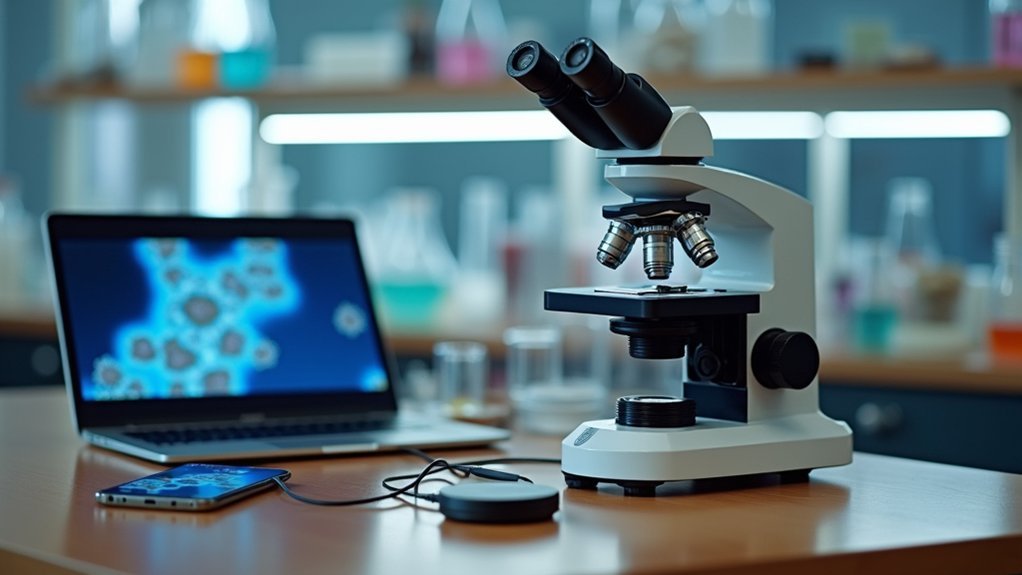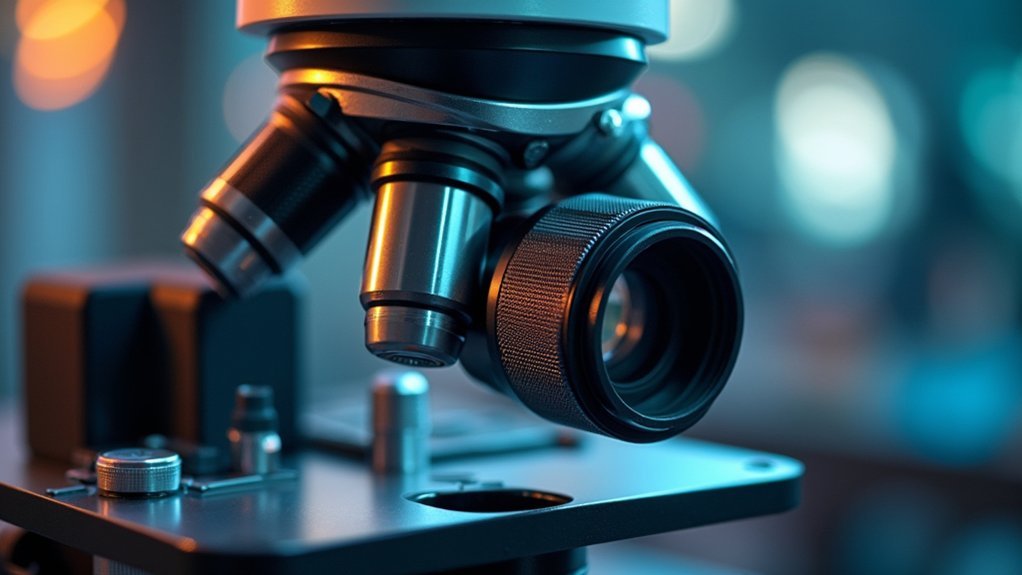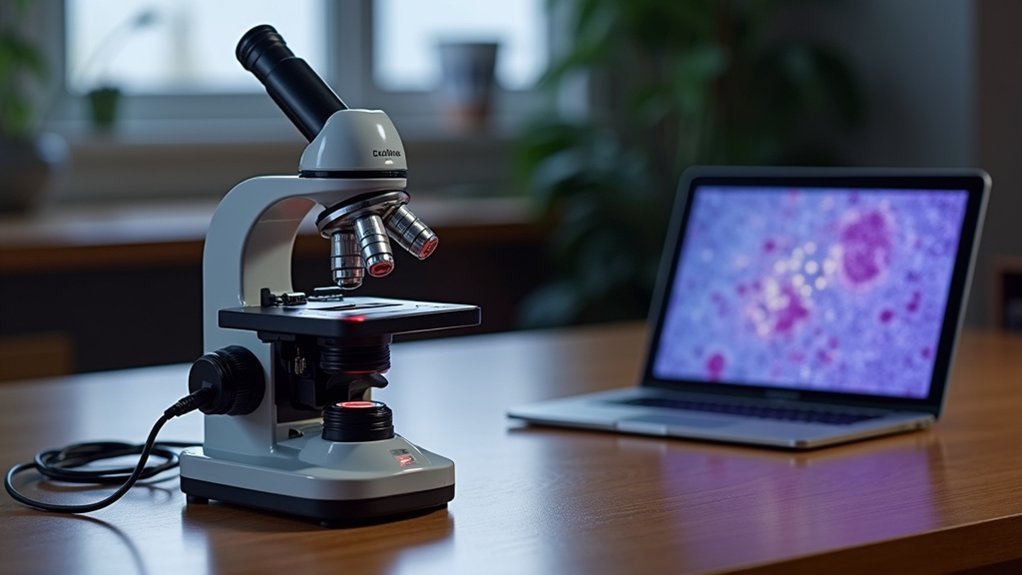You can connect your microscope to devices in three primary ways. First, use a smartphone adapter with electrical tape or a dedicated mount for quick, budget-friendly imaging. Second, integrate a digital camera using a C-mount adapter for higher quality results. Third, connect a USB microscope camera directly to your computer for advanced analysis capabilities. Each method offers different balances of convenience, image quality, and cost that match your specific microscopy needs.
3 Ways to Link Your Microscope to Devices

While microscopes provide fascinating views of the microscopic world, connecting them to digital devices greatly enhances their functionality and documentation capabilities. You can secure your smartphone to the eyepiece using blue electrical tape or a dedicated adapter for basic imaging needs.
For superior image quality, consider using a Fuji XS 10 with a C mount adapter, which accommodates different sensor sizes and provides better dynamic range. Professional-grade options include 1-inch, 20-megapixel USB cameras that connect directly to your computer, offering high-quality capture and advanced editing features.
Don’t forget calibration—attach a stage micrometer to guarantee accurate measurements across different magnifications.
For thorough analysis, integrate software like ImageJ to enable image stitching and detailed examination of your high-quality microscopic images.
Smartphone Adapters: Budget-Friendly Image Capture
Although professional microscopy equipment can be expensive, smartphone adapters offer an affordable entry point for capturing microscopic images.
Microscope smartphone adapters put scientific imaging within reach, despite the high cost of professional equipment.
You’ll find these budget-friendly tools transform your everyday phone into a scientific imaging device with minimal investment.
When selecting a smartphone adapter, consider:
- Compatibility with your specific microscope model to avoid frustrating mounting issues
- Field of view limitations that might affect your captured images
- Image quality differences between phone models (newer phones like the iPhone 15 typically perform better)
- The need for occasional adjustments to minimize vignetting
If you encounter compatibility problems, temporary solutions like blue electrical tape can work in a pinch.
However, investing in a proper adapter will greatly enhance image quality and provide a more reliable setup for your microscopic imaging needs.
Digital Camera Integration With C-Mount Adapters

Unlike smartphone adapters, C-mount adapters offer a significant upgrade for microscope imaging by creating a direct connection between your digital camera and microscope’s optical system.
When selecting a C-mount adapter, you’ll need to match it with your camera’s sensor size to optimize image quality and field of view.
If you’re using a camera with APS-C sensors, like the Fuji XS 10, remember to account for the 1.5x crop factor when calculating magnification. This affects what you’ll see through your setup.
After installation, proper calibration and focusing are essential for capturing sharp, accurate images of your specimens.
While professional microscopy cameras provide advanced features like high-resolution stitching and better integration, they’re considerably more expensive.
A C-mount adapter with your existing digital camera offers an excellent middle-ground solution.
Frequently Asked Questions
How Do I Connect My Microscope to My Computer?
You’ll need a USB microscopy camera with proper adapters like a C-mount. Connect it to your computer, install required software, and follow manufacturer’s calibration instructions for ideal image quality and functionality.
What Are Some Ways in Which Microscopes Can Be Used?
You can use microscopes for education to explore cells, disease diagnosis in medical labs, scientific research to study specimens, forensic analysis of crime evidence, and environmental monitoring to assess water quality.
Can I Add a Camera to My Microscope?
Yes, you can add a camera to your microscope using smartphone adapters, C-mount adapters, or dedicated microscopy cameras. Each option offers different image quality and features depending on your needs and budget.
How Do I Connect My USB Microscope to My Phone?
You’ll need an OTG adapter for your phone’s charging port. Just plug your USB microscope into this adapter, download a compatible app like CameraFi, and your phone will recognize the microscope as an external camera.
In Summary
You’ve now got three powerful ways to connect your microscope to digital devices. Whether you’re choosing budget-friendly smartphone adapters or professional C-mount camera integration, you’ll capture microscopic worlds like never before. Don’t hesitate to experiment with different setups to find what works best for your needs. These connection methods will transform your microscope from a simple viewing tool into a complete digital imaging system.





Leave a Reply